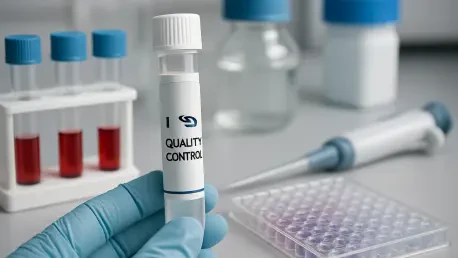Imagine a world where diagnostic tests for critical health conditions are unreliable, leading to misdiagnoses and delayed treatments—a scenario that could have devastating consequences for patients and healthcare systems alike. This pressing concern underscores the vital importance of quality control in the realm of in vitro diagnostics (IVD), a sector that ensures the accuracy and dependability of medical testing. Valued at $1.65 billion currently, the global IVD quality control market is on a robust growth trajectory, projected to reach an impressive $2.15 billion by 2030, with a steady compound annual growth rate of 5.5% over the forecast period. This expansion reflects a growing recognition of the need for stringent quality measures in clinical laboratories worldwide. As diagnostic testing becomes increasingly integral to healthcare, driven by rising disease prevalence and technological advancements, the demand for reliable quality control solutions has never been more critical to maintaining trust in medical outcomes.
Driving Forces Behind Market Expansion
The surge in the IVD quality control market is propelled by several interconnected factors that highlight the evolving needs of the healthcare industry. A significant driver is the increasing number of accredited clinical laboratories globally, which must adhere to strict standards to ensure testing accuracy. This trend is amplified by a growing preference for third-party quality controls, valued for their unbiased performance monitoring and alignment with rigorous regulatory requirements. Additionally, the rise in chronic and infectious diseases has led to a higher volume of diagnostic tests, necessitating robust quality control mechanisms to handle the increased workload. The adoption of point-of-care testing instruments, particularly in developed regions, further emphasizes the need for versatile quality control products that can support diverse diagnostic platforms. External quality assessment programs also play a pivotal role, enabling laboratories to benchmark their processes against independent standards, thus reinforcing confidence in diagnostic results across the board.
Key Segments and Growth Opportunities
Delving into the market’s structure reveals distinct segments, each contributing uniquely to overall growth, with quality control products emerging as the frontrunner. This segment is poised for the highest growth rate through 2030, driven by the global uptick in IVD testing and the escalating burden of chronic and infectious diseases. Advanced diagnostic technologies, such as molecular assays, further fuel the demand for control materials essential for performance validation and regulatory compliance. Laboratories increasingly favor third-party controls for their impartial evaluation capabilities and adaptability across various testing platforms, offering a level of flexibility that instrument-specific controls often lack. Regulatory mandates also bolster this segment, as they require consistent use of quality control materials to meet compliance standards. This focus on precision and standardization positions quality control products as a cornerstone of market expansion, reflecting broader industry trends toward reliability and technological sophistication in diagnostics.









